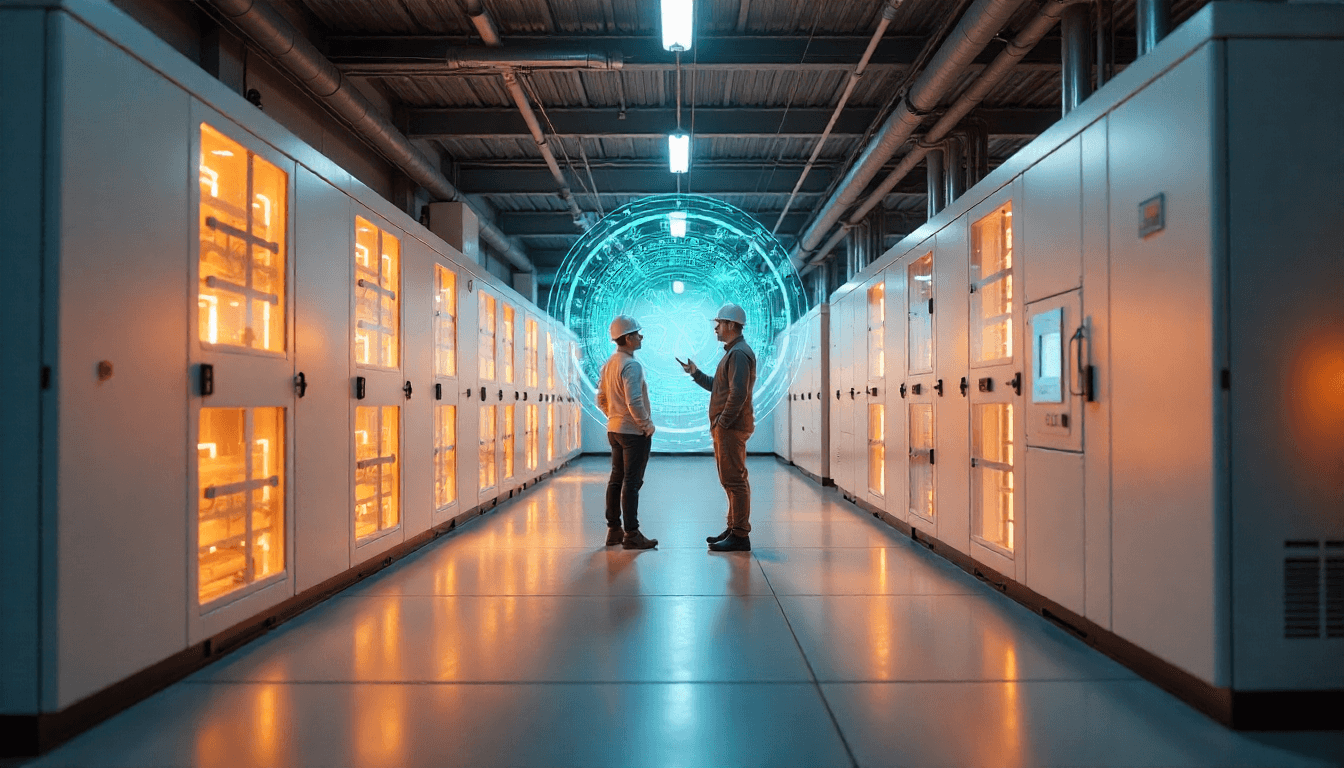The global energy transition hinges on our ability to harness renewable power from sources like wind and solar. However, these resources are inherently intermittent. This variability poses a significant challenge to the stability of our existing electrical grids. A recent $75M energy storage investment represents a bold commitment to solving this problem. This strategic funding is a powerful vote of confidence in a technology that will make the grid more reliable, resilient, and ready for a renewable-powered future. This transaction is not just about financing; it is about building the fundamental infrastructure that will allow clean energy to dominate the power sector. This article examines a major financial transaction (over $50 million) that is powering the future of grid infrastructure.
For decades, our electrical grids operated on a simple principle. We generated power from predictable, on-demand sources like coal and natural gas plants. Grid operators could precisely match supply to demand in real time. The rise of renewables has disrupted this model. They introduce a new variable into the equation. Now, power generation depends on the weather and time of day, not on a utility’s dispatch schedule. The grid, built for one-way, centralized power flow, struggles with this new reality. Consequently, we have seen instances of power curtailment. This is when excess renewable energy is wasted. We have also seen the grid become more vulnerable to disruptions. To make a truly clean grid a reality, the industry needed a new solution. The energy storage investment in a company specializing in advanced grid solutions has provided a path forward.
The Critical Need for Grid Reliability
A reliable power grid is the backbone of modern society. It powers our homes, businesses, hospitals, and communication systems. The intermittency of renewables like solar and wind can cause grid frequency and voltage to fluctuate. These fluctuations can lead to instability and, in the worst-case scenarios, widespread blackouts. To prevent this, grid operators often use fossil fuel plants to provide “ancillary services.” These plants can respond quickly to stabilize the grid. They burn fuel even when their primary power is not needed. This creates unnecessary emissions.
Furthermore, our grids face increasing strain from peak demand. This happens during hot summer afternoons when everyone turns on their air conditioning. To meet this demand, utilities must fire up expensive and polluting “peaker plants.” These plants only run for a few hours a day. The industry needed a solution that could provide both instantaneous stability and large-scale power on demand. A smart energy storage investment can address both of these issues simultaneously. It helps us build a more robust and sustainable grid.
The $75M Bet on GridFlow Dynamics
The landmark $75M energy storage investment was secured by “GridFlow Dynamics,” a company developing a comprehensive suite of grid-scale solutions. This funding round, led by a group of climate-focused investment firms, represents a major milestone. It validates the commercial viability of next-generation energy storage. GridFlow’s technology platform combines two key innovations. First, it uses an intelligent software layer to manage grid stability in real time. Second, it has a new, long-duration storage technology. This technology can provide power for a full day or more. This substantial capital infusion will accelerate the deployment of these technologies across North America and Europe.
The funds will finance the construction of several new battery energy storage systems (BESS) at key points on the grid. They will also be used to scale up the company’s new thermal storage system. The system can store energy for extended periods. This investment is not just about building a product. It is about creating a new grid architecture that is more resilient and more efficient. The strategic energy storage investment positions GridFlow Dynamics as a leader in the race to build the grid of the future.
Solving the Intermittency Challenge with Innovation
The core problem with renewables is their unpredictable nature. Wind turbines do not spin on a calm day. Solar panels do not produce power at night. Energy storage solves this problem by decoupling energy generation from consumption. GridFlow Dynamics is tackling this with a two-pronged approach. Its fast-response lithium-ion BESS can absorb excess energy from a solar farm during the day. It can then discharge that energy during the evening peak. This “time-shifting” of power makes solar a dispatchable resource. It ensures that clean energy is available when it is needed most.
For longer periods without sun or wind, the company is deploying its proprietary long-duration thermal storage. This system, which stores energy as heat in a molten salt medium, can discharge power for days. It provides a crucial buffer for the grid. This solution overcomes the limitations of traditional batteries. The energy storage investment is a bet on the long-term viability of this technology. It can provide a reliable, 24/7 power source without relying on fossil fuels.
A Path to a More Resilient Grid
Energy storage plays a crucial role in creating a more resilient grid. It provides ancillary services that ensure the grid stays stable. The intelligent software from GridFlow Dynamics can monitor grid conditions in real time. It can then instruct its BESS to inject or absorb power in milliseconds. This instantaneous response capability is vital for maintaining a consistent frequency and voltage. It helps prevent cascading outages. The investment has helped accelerate the development of this critical software. It makes the grid safer and more reliable.
Furthermore, by strategically placing these storage systems throughout the grid, utilities can defer expensive infrastructure upgrades. They can also reduce their reliance on long-distance transmission lines. This decentralized approach creates a more robust and flexible grid. It can withstand extreme weather events and other disruptions. The energy storage investment is funding a future where the grid is no longer a single, vulnerable network. It is a distributed, self-healing system that is built to last.
The Economic and Environmental Benefits
This significant energy storage investment has clear economic and environmental benefits. It reduces the need for expensive peaker plants. This saves utilities money and lowers electricity bills for consumers. It also helps integrate more renewable energy into the grid. This reduces the need for fossil fuels and cuts greenhouse gas emissions. The long-duration storage technology, in particular, will allow a much higher penetration of renewables. This will further accelerate global decarbonization efforts.
The investment is also stimulating job creation in the clean energy sector. It is funding research, manufacturing, and installation jobs. It is creating a new industry around grid-scale storage. This transaction is more than a financial deal. It is a powerful economic engine for the green economy. It shows how smart capital can drive innovation. It helps us build a more sustainable and prosperous future. The legacy of this energy storage investment will be a grid that is cleaner, smarter, and more reliable than ever before. It proves that with the right technology and the right funding, we can build a better world.



Observații